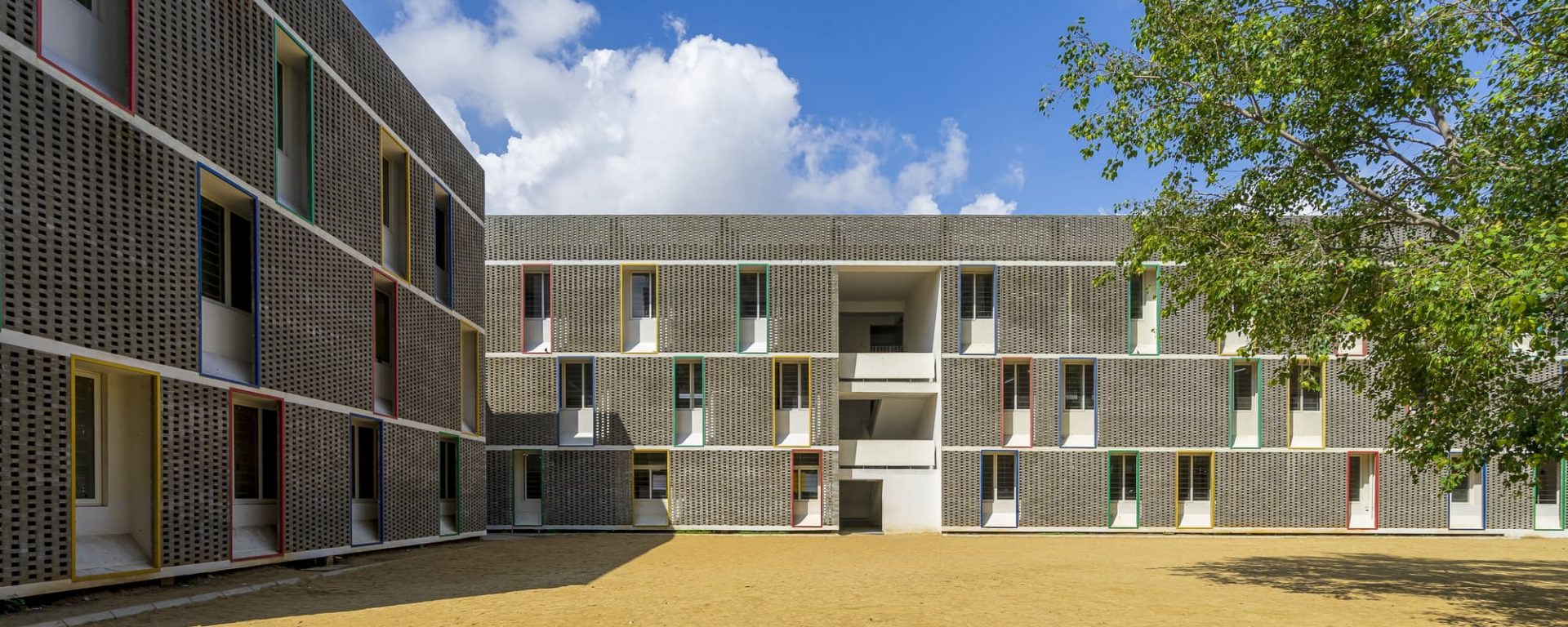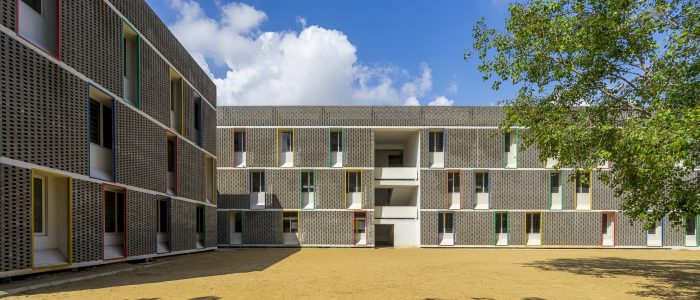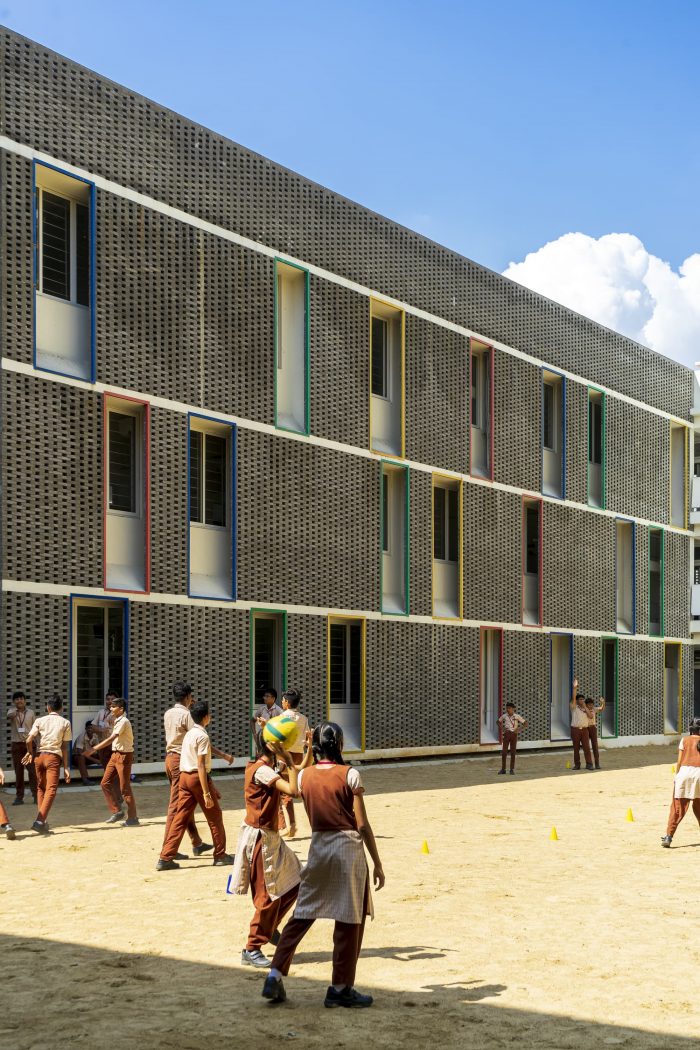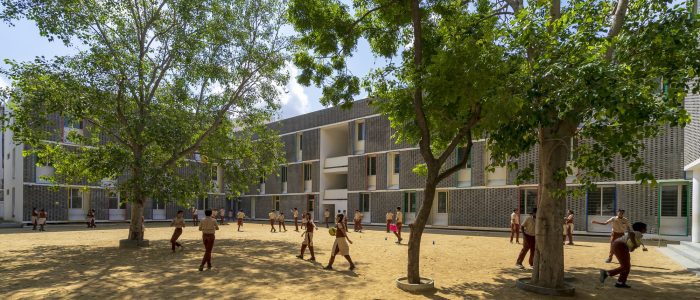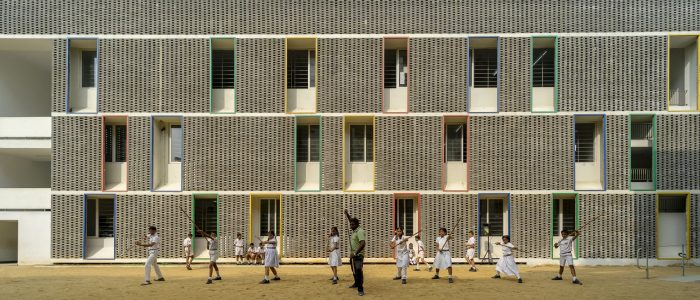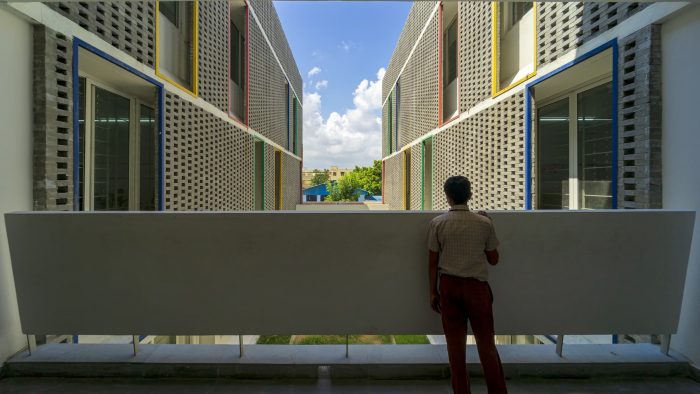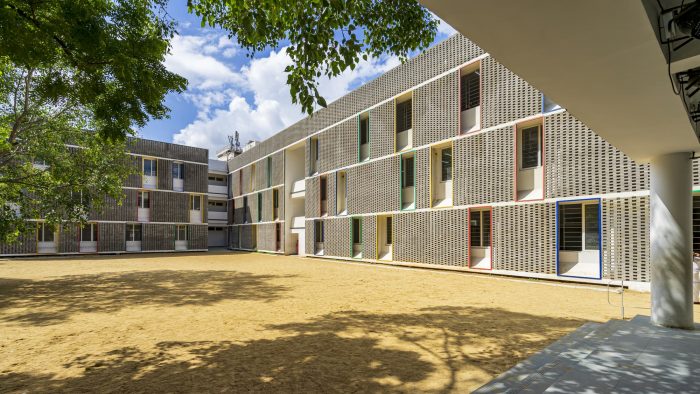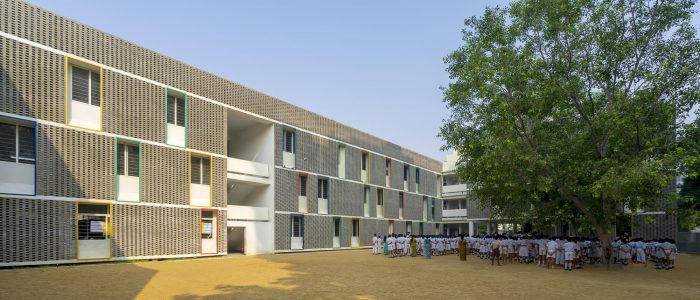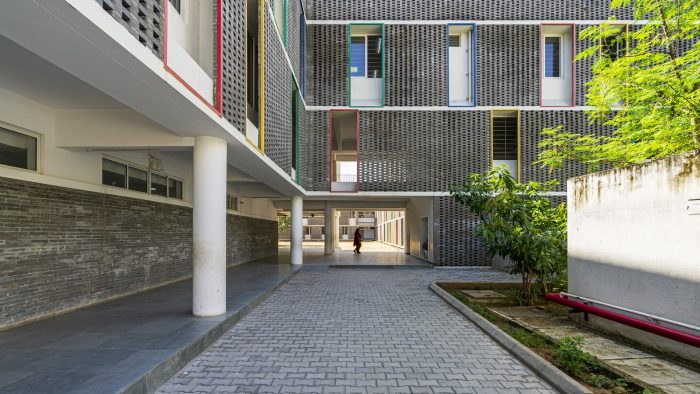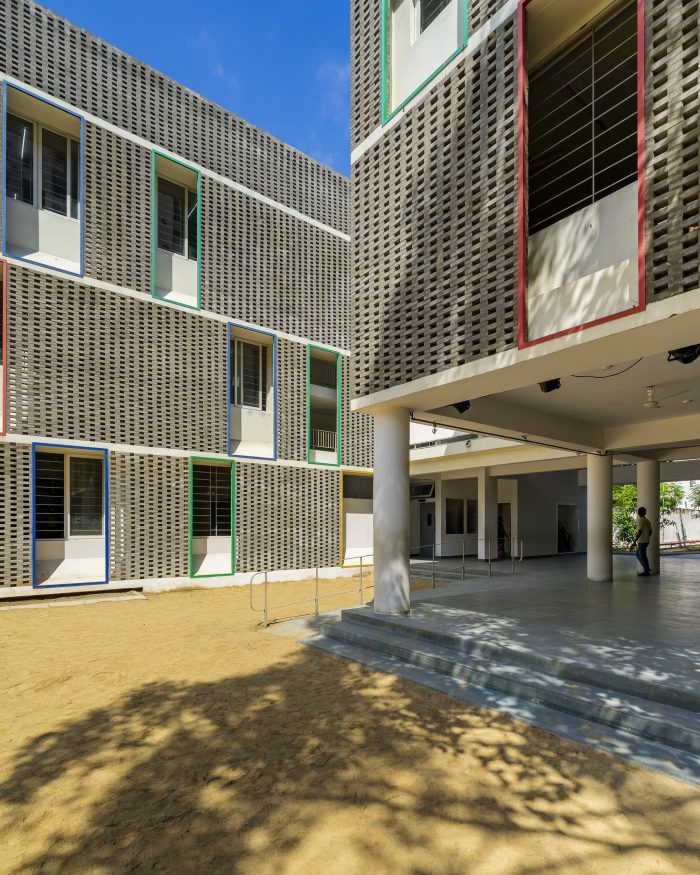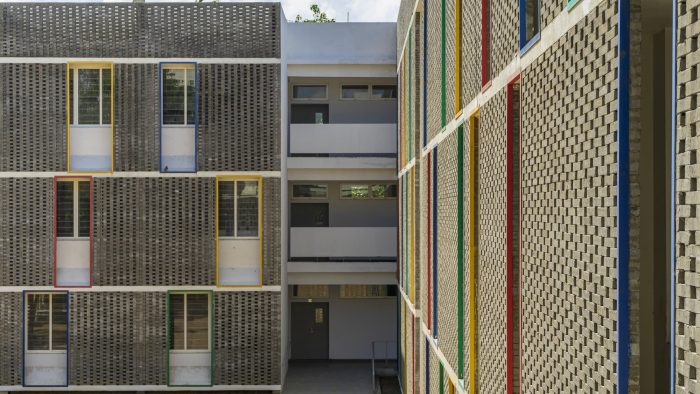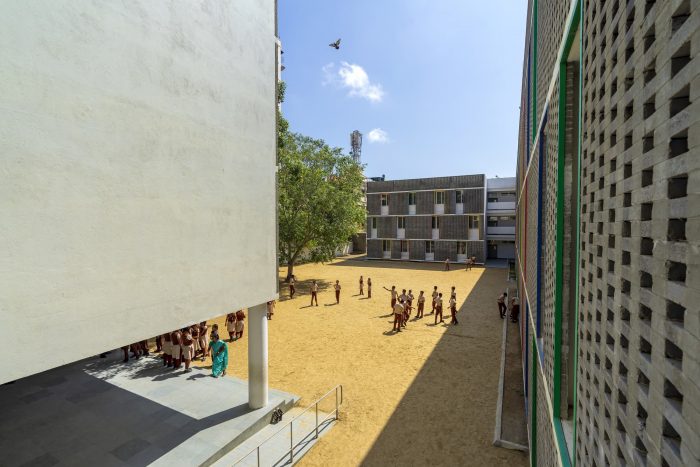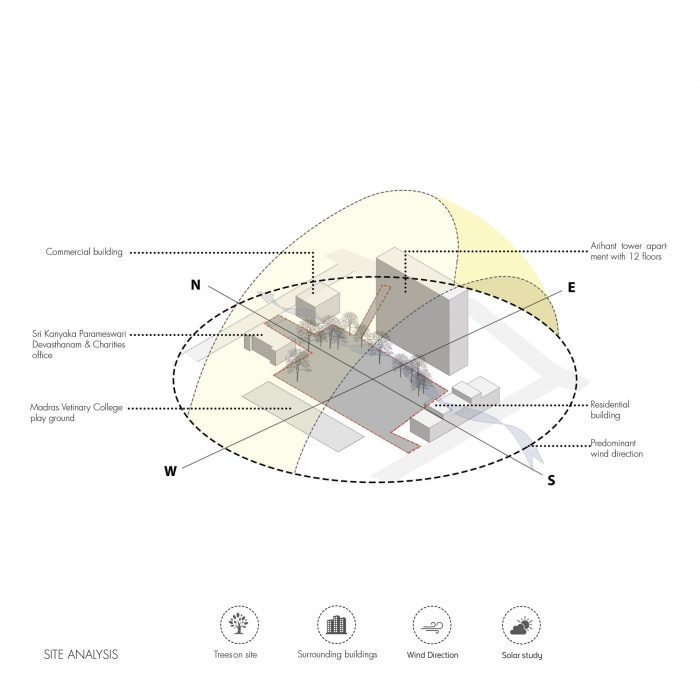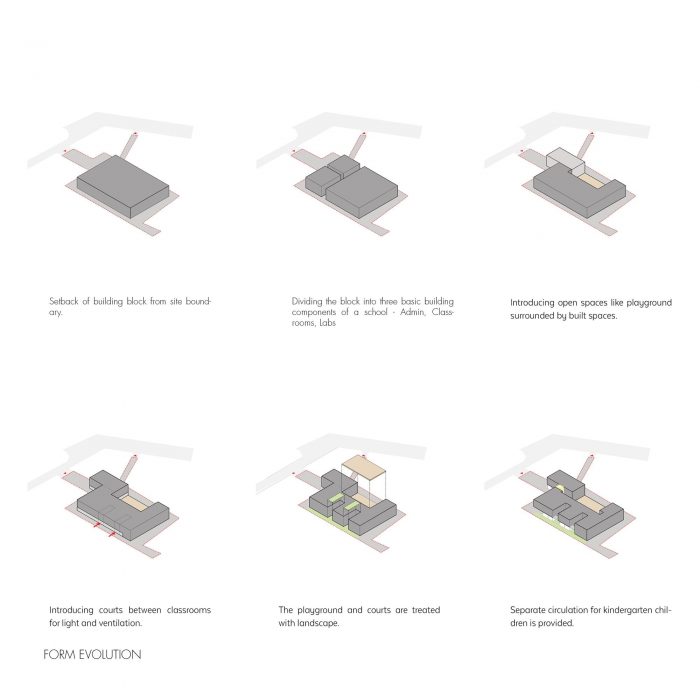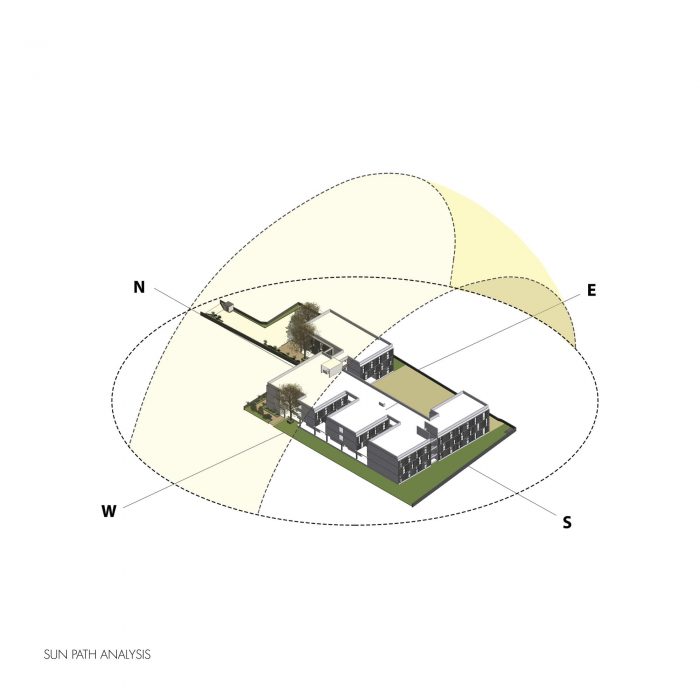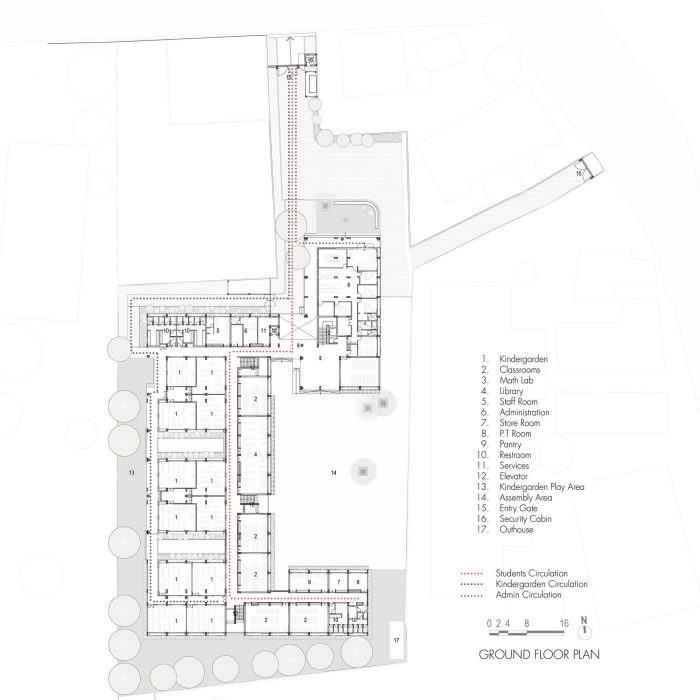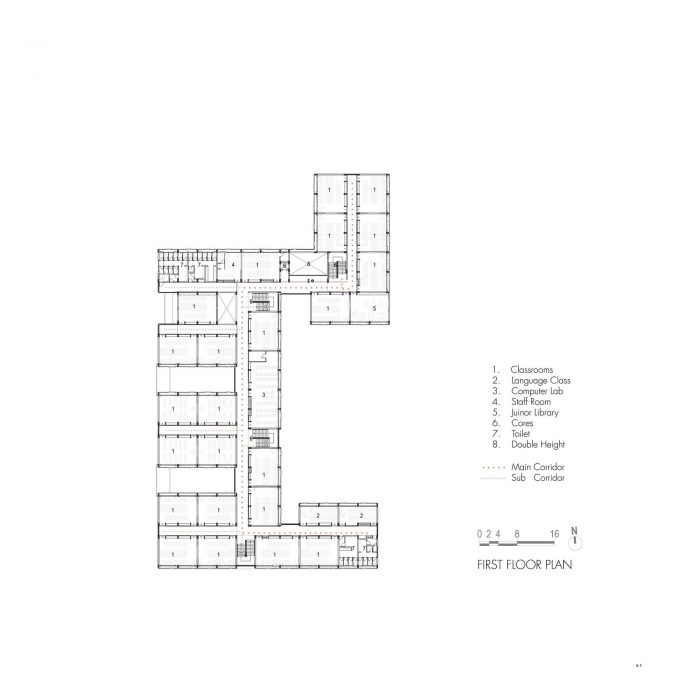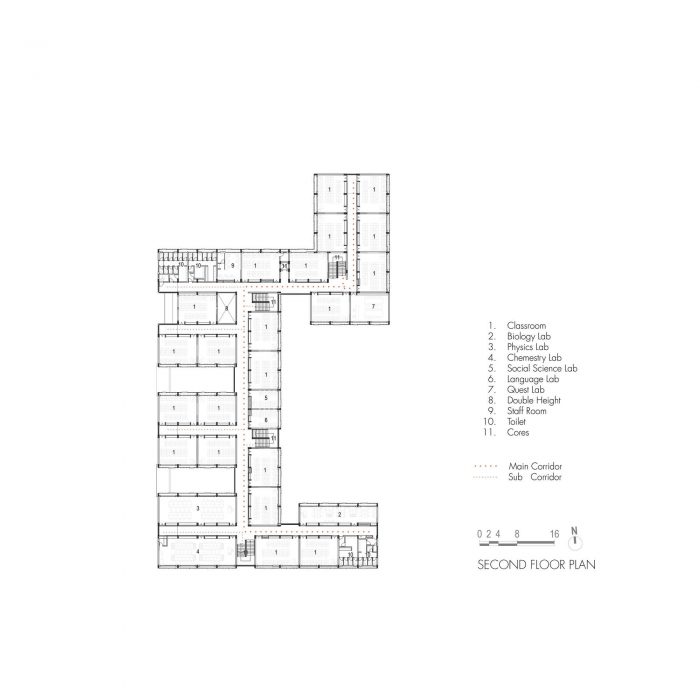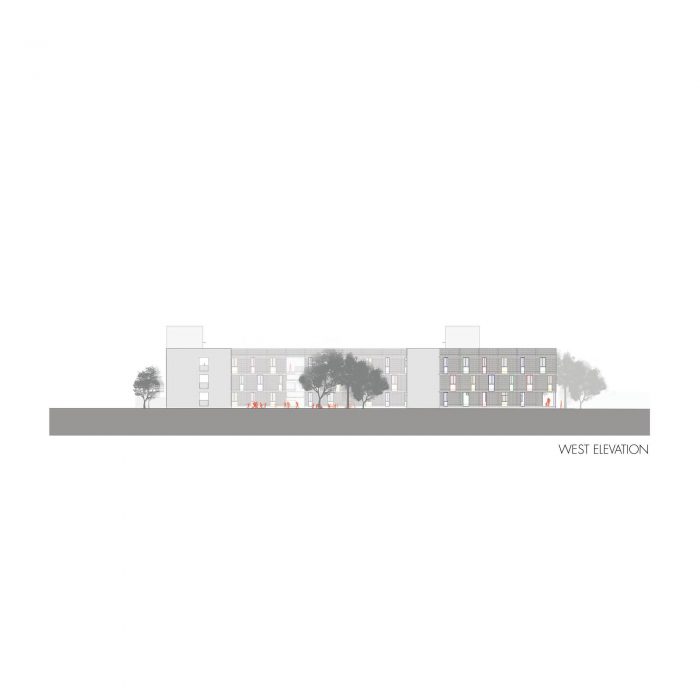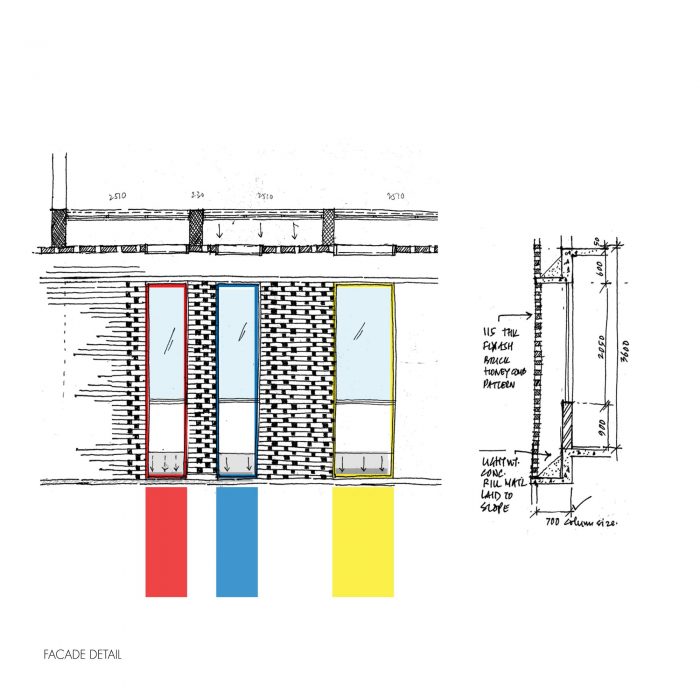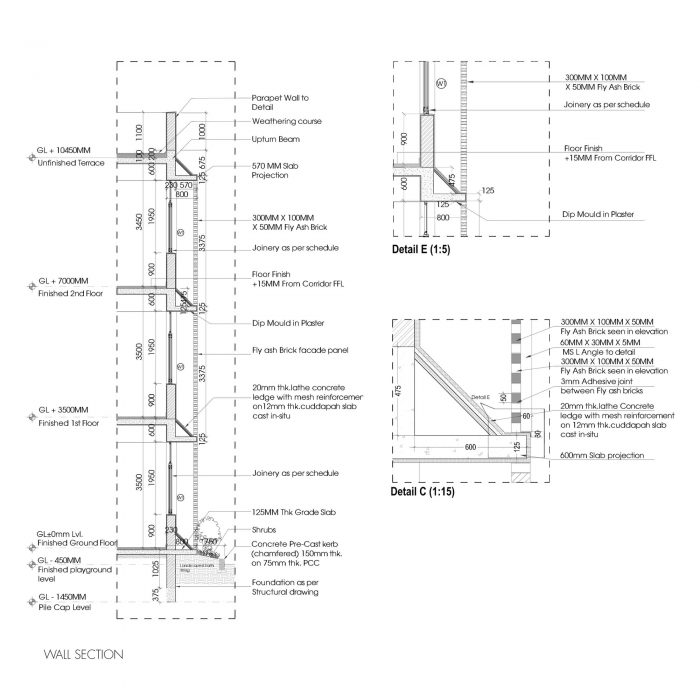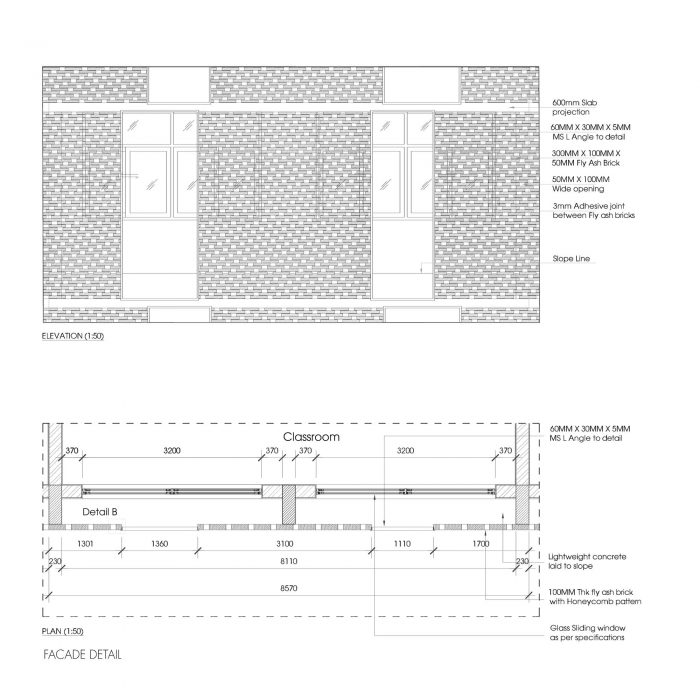Maharishi Vidya Mandir学校是一所位于Periamet,Chennai的CBSE学校建筑。这所学校是为大约2400名儿童设计的。设计和建造建筑物的效率必须与我们的信念相平衡:为这些年幼的孩子们创造一个温暖的、充满乐趣的和温馨的环境,使之充满自然光和通风。该项目的关键目标是为孩子们提供一个适合学习和探索的环境。
Maharishi Vidya Mandir School is a CBSE school building in Periamet,Chennai. The school is designed for about 2400 children. The efficiencies of designing and constructing a building had to be balanced with what we believed in: creating a warm, playful and welcoming environment for these young children that would be filled with natural light and ventilation. The key objective of the project is to provide the children with a suitable environment to learn and explore.
场地 – 1.6英亩的场地位于Periamet,周围有密集的住宅公寓、兽医学院、商业店铺和尼赫鲁体育场。该场地在Sydenhams路和贝克街都有非常小的临街面,通过狭窄的通道作为两个入口。这两个入口都有一个共同的到达区。
Site – The 1.6-acre site is located in Periamet, surrounded by dense residential apartments, a veterinary college, commercial shops, and Jawaharlal Nehru Stadium. The site has very minimal road frontage on both Sydenhams road and Baker Street and serves as two entry points through narrow passages. Both accesses to the site share a common arrival zone.
分区 – 场地的大部分面向东部和西部。主要的风向是东南方向。东部的外围被一个住宅塔楼占据。场地边界内现有的树木被保留。建筑物占地面积内有一棵铜荚树和一棵millettia pinnata树,设计中必须考虑到它们。建筑物的占地面积是为了利用主要的风向而设计的。东边的住宅塔楼在场地上投下阴影,因此操场就设在那里。幼儿园儿童的游戏区位于西面,因为它在早上会被教学楼遮住。建筑物的手指状外形允许大部分的开口完全放在南北两面,而西面则没有任何开口。
Zoning – Most of the site faces east and west. The predominant wind direction is southeast. The eastern periphery is occupied by a Residential tower. Existing Trees inside the site boundary were retained. A copper pod and a millettia pinnata tree were in the building footprint area and the design had to accommodate them. The building footprint was envisaged to take advantage of the predominant wind direction. The residential tower on the east cast shadows on the site, hence the playground was located there. A play area for kindergarten children was located in the west as it would be shaded by the school building in the morning hours. The finger-like form of the building allows most of the openings to be placed on the North and South exclusively, leaving the west facade bereft of any openings.
规划 – 在一楼楼梯附近提供中庭空间,以创造一个充满活力和刺激的室内空间,有充足的天窗和良好的空气流动。指形教室之间的球场作为幼儿园儿童游戏区的延伸,同时提供自然光。在建筑的入口处创造了一个高容量的空间,为用户提供了一种抵达的感觉。俯瞰高层的走廊使这个空间增强了体验。这导致了一个有顶棚的阳台,作为一个舞台,向操场开放,这也是学生在晨会期间的一个聚会广场。这种安排充分利用了一直吹过这个空间的环境南风。
Planning – The Atrium space was provided near the staircase on the first floor to create a dynamic and stimulating interior with ample skylight and good air movement. The courts in between the fingers-formed classrooms act as extensions of the play areas for the KG children while providing natural daylight. A high-volume space was created at the entry of the building to provide a sense of arrival to the users. A corridor overlooking the upper floors lends this space to enhance the experience. This leads to a covered verandah that acts as a stage opening out to the playground, which is also a congregational plaza for the students during morning assembly. This arrangement makes full use of the ambient south breeze that blows through this space all the time.
教室是孩子们度过大部分时间的空间。它被自然光照亮,并提供良好的通风。为了减少来自走廊的噪音,创建了一个750毫米的缓冲区,用来存放书本和由cuddapah石头制成的书包。这面墙上面的空间有可开启的窗户,可以交叉通风。
The classroom is a space where children spend most of their time. It is illuminated with natural light and provides good ventilation. To reduce noise from the corridor, a 750mm buffer zone is created which was utilized for storing books and school bags made from cuddapah stone. The space above this wall has openable windows that allow cross ventilation.
外墙—外墙就像建筑的皮肤一样,保护它不受刺眼的阳光和鸽子的栖息。粉煤灰砖是定制的,高度为50mm,以防止鸟类进入。为了减少鸟类在窗户上筑巢,倾斜的石头被放置在石板凸起的上方。砖的贾里宽100毫米,允许散射光。几块涂有原色的框架板为外墙提供了浮雕,同时也为每间教室提供了有框的视野。粉煤灰砖是火力发电站中燃烧煤粉的副产品。这种粉煤灰被用于建筑行业的制砖。这种砖有很高的密度,因此减少了水的渗透性,同时具有很高的强度。它具有耐火性和高隔热性。通过重新使用这种废弃的副产品,它是一个环境友好的解决方案。
Façade – The facade acts as a building skin protecting it from the harsh sunlight and the roosting of pigeons. The fly ash bricks were custom-made at 50mm height to prevent bird entry. To reduce bird nesting on the window, the inclined stone was placed above the slab projection. The brick jali is 100mm wide and allows diffused light. A few framed panels painted in primary colors provide relief in the facade as well as a framed view for every classroom. Fly Ash Brick is a by-product of burning pulverized coal in thermal electric generation power plants. This fly ash is used for making bricks in the construction industry. The bricks have high density and hence reduce the water permeability while having high strength. It has fire resistance and high thermal insulation. By reusing this waste by-product, it is an environmentally friendly solution.
Architects: KSM Architecture
Area : 80700 ft²
Year : 2019
Photographs :Triple O Pixel
Manufacturers : Saint-Gobain, Crompton, Gazel Architectures, Jaquar, Kajaria, Parryware
Lead Architects : Sriram Ganapathy, Siddarth Money, Nirmal Raj
Civil Contractors : Qualtech Engineers
Interior Contractors : Qualtech Engineers
Electrical Consultants : Kausi Electrical
Structural Consultants : V Sangameswaran Consulting Engineers
Design Team : Sriram Ganapathy, Siddarth Money, Nirmal Raj, Mohanraj, Parameswari, Seran
Plumbing Consultants : Balu & Associates
City : Chennai
Country : India

